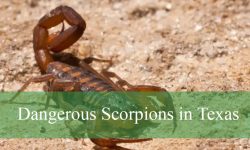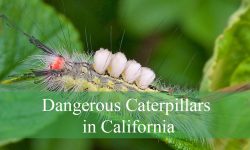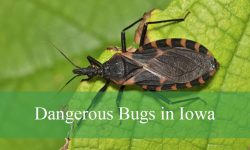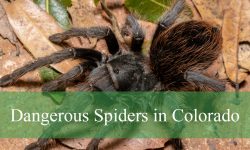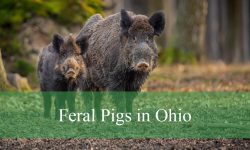Connecticut may not seem like a reptile-rich state, but it is home to a handful of fascinating lizard species. From the native Common Five-lined Skink to the adaptable Italian Wall Lizard, these reptiles have found ways to thrive even in the state’s temperate climate.
Although sightings are rare due to their secretive nature, lizards in Connecticut occupy a variety of habitats—from sunny woodland edges to rocky coastal areas. Each species has its own unique behaviors, appearances, and survival strategies suited to the region’s changing seasons.
In this guide, you’ll learn about five types of lizards in Connecticut, complete with pictures and identification details. We’ll explore their habitats, diets, and distribution so you can better recognize these remarkable reptiles when you encounter them in the wild.
Different Types of Lizards Found in Connecticut
Common Five-lined Skink (Plestiodon fasciatus)
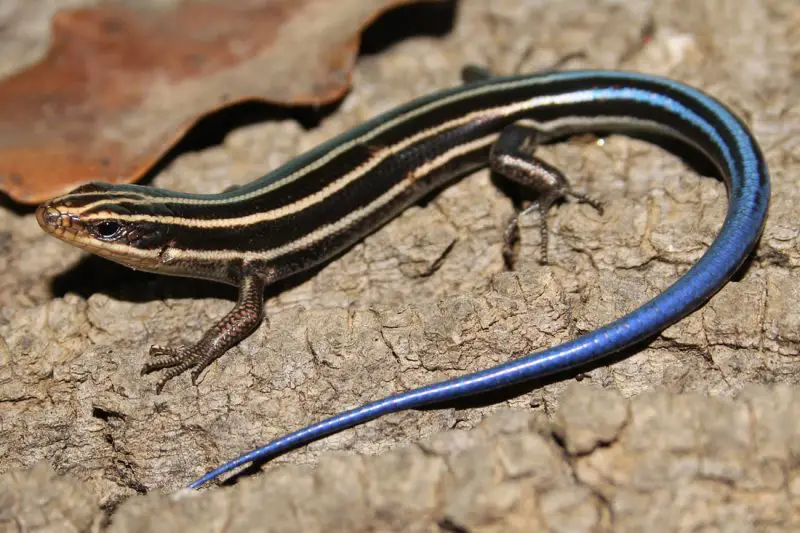
The Common Five-lined Skink is the most widespread and only native lizard species in Connecticut. It’s easily recognized by its shiny, smooth scales and distinctive five light stripes running from the head to the tail. Juveniles display a striking bright blue tail that fades with age, while adult males often develop reddish coloring on their heads during the breeding season. Adults typically measure between 5 to 8.5 inches in total length.
This species prefers warm, sunny habitats with plenty of cover, such as rocky outcrops, decaying logs, and forest edges. In Connecticut, they are most often found in the southern and central regions, especially in dry woodland areas and open hillsides. They are shy and quick to hide under leaf litter or rocks when disturbed, making sightings relatively uncommon despite their presence.
Common Five-lined Skinks are diurnal, active primarily during the day when temperatures are moderate. They are skilled climbers and may occasionally be seen on tree trunks or fences. Their diet consists mostly of insects, spiders, and other small invertebrates, which they capture with quick, darting movements. This insectivorous habit helps control local pest populations.
Breeding occurs in spring, and females lay 4 to 15 eggs in early summer, usually in a hidden, moist nest site. Females guard their eggs until hatching, showing rare parental care for a reptile. Hatchlings emerge after about a month, already displaying the characteristic blue tails that serve as a predator distraction mechanism.
In Connecticut, the Common Five-lined Skink plays an important ecological role despite its elusive nature. Its populations are stable but limited to favorable microhabitats. Habitat loss and human encroachment remain threats, making the conservation of forest edges and rocky woodlands essential for sustaining this species.
Broad-headed Skink (Plestiodon laticeps)
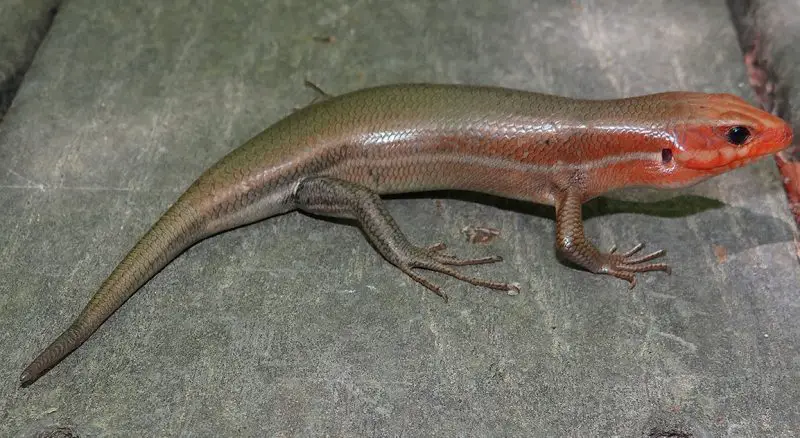
The Broad-headed Skink is a large and robust lizard, closely related to the Five-lined Skink but less common in Connecticut. Adult males are particularly impressive, with massive, broad heads and orange to red coloration during the breeding season. They can reach up to 13 inches in total length, making them one of the largest skinks found in the eastern United States.
This species prefers warm, forested habitats with abundant fallen logs, leaf litter, and rotting stumps. In Connecticut, sightings are rare and mostly limited to the southernmost parts of the state, especially near forested river valleys. They are semi-arboreal and often climb trees or wooden structures in search of food or shelter.
Broad-headed Skinks feed on insects, spiders, small snails, and occasionally smaller lizards. Their hunting behavior is stealthy; they use their excellent eyesight and rapid tongue flicking to detect and capture prey. This diet makes them beneficial in controlling insect populations in their ecosystem.
During breeding season, males become territorial and display dominance through head bobbing and jaw gaping. Females lay clutches of 8 to 22 eggs in decaying wood or loose soil, typically in secluded, humid spots. The female remains with her eggs until they hatch, providing protection from predators and maintaining proper moisture levels.
Though rare in Connecticut, Broad-headed Skinks contribute to the state’s reptile diversity. Their population persistence depends on the availability of undisturbed woodlands and natural debris. Conservation of mature forests with fallen logs and dead trees can help support this elusive and fascinating species.
Little Brown Skink (Scincella lateralis)
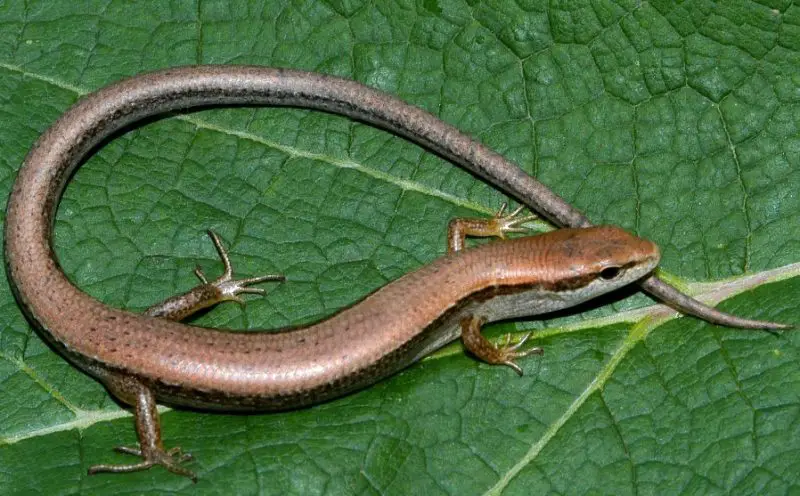
The Little Brown Skink, also known as the Ground Skink, is a small, secretive lizard that occasionally appears in southern Connecticut. Measuring only about 3 to 5.5 inches in length, it is one of the smallest reptiles in North America. Its body is sleek, with smooth bronze-brown scales and a lighter underbelly, blending perfectly into leaf litter.
This species thrives in moist forest floors with abundant leaf litter and decaying vegetation. In Connecticut, it may occur sporadically along the coastal plain or as an introduced population from nearby states. Due to its size and secretive nature, it is rarely observed except when accidentally disturbed under leaves or logs.
Little Brown Skinks are ground dwellers that prefer crawling and burrowing through soil rather than climbing. They feed on small insects, ants, spiders, and larvae. Their rapid, serpentine movement helps them escape predators quickly. Unlike other skinks, they are less dependent on basking sites, staying hidden under the cover of forest debris.
Breeding takes place in spring, and females lay 1 to 6 eggs in soft, moist soil. Hatchlings appear in mid-summer and are miniature replicas of adults. Because they spend most of their lives under the forest floor, much of their behavior remains poorly studied, adding to their mystery.
In Connecticut, Little Brown Skinks are considered uncommon and possibly transient. However, they highlight the delicate balance of the state’s woodland ecosystems. Protecting moist forest habitats and minimizing pesticide use can support their potential survival and encourage population stability.
Italian Wall Lizard (Podarcis siculus)
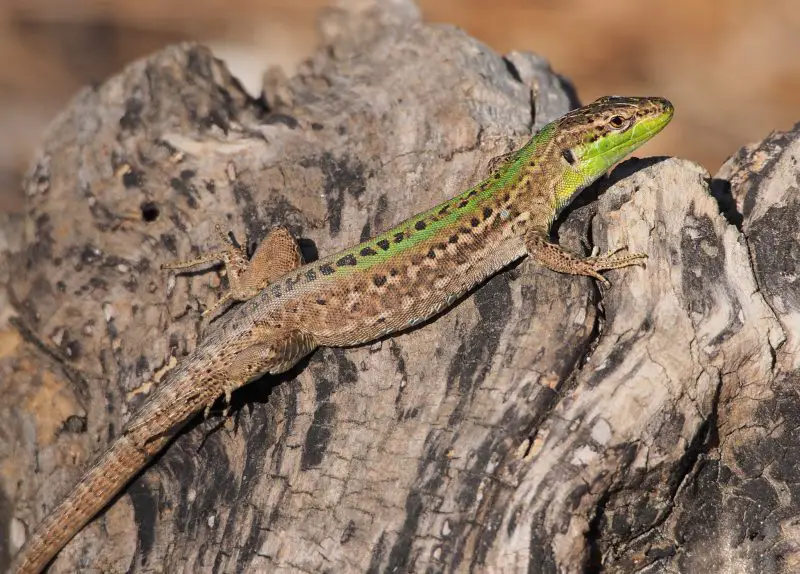
The Italian Wall Lizard is an introduced species that has established localized populations in southern Connecticut, particularly along the coast. Originally from southern Europe, it was likely introduced through pet releases or accidental transport. This slender, agile lizard features green to brown coloration with darker spots and stripes along its back, giving it excellent camouflage in urban environments.
Italian Wall Lizards are highly adaptable and thrive in human-modified areas, such as stone walls, gardens, and old buildings. They are most active during sunny, warm days and can often be seen basking on walls or rocks. Unlike native species, they tolerate cooler climates, allowing them to survive Connecticut winters with some success.
Their diet includes insects, spiders, and small invertebrates, though they may occasionally eat fruits and plant matter. These lizards are agile hunters and rely on speed to capture prey and escape threats. Their adaptability to a wide variety of food sources contributes to their successful establishment in new areas.
Reproduction occurs in late spring and early summer. Females lay multiple small clutches of eggs each year, buried in sandy or loose soil. Hatchlings mature quickly, ensuring the species’ persistence in its introduced range. Their population can grow rapidly under favorable conditions.
In Connecticut, the Italian Wall Lizard has become a notable example of a non-native species adapting well to local environments. While not considered invasive at present, monitoring is important to ensure that they do not outcompete native reptiles for resources. Their presence adds an unexpected Mediterranean touch to the state’s fauna.
Eastern Fence Lizard (Sceloporus undulatus)
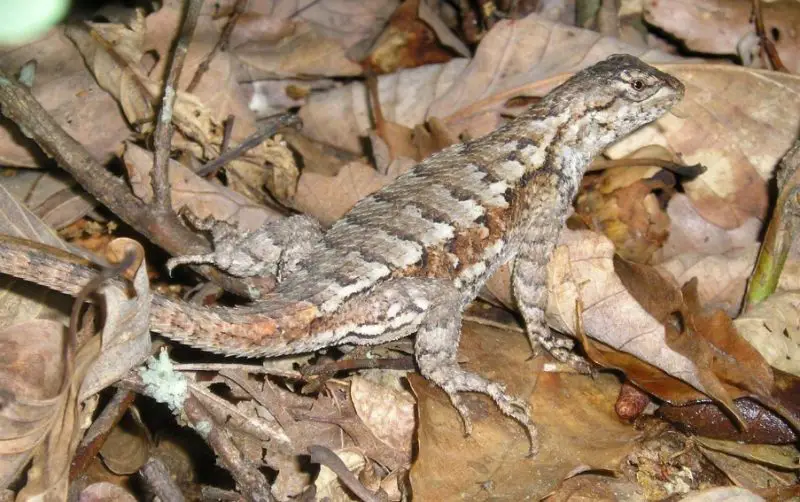
The Eastern Fence Lizard is a medium-sized, rough-scaled reptile sometimes found near Connecticut’s southern borders. It has a gray or brown body with wavy, dark crossbands, and males often display brilliant blue patches on their bellies and throats during breeding season. Adults typically reach lengths of 4 to 7 inches.
This lizard prefers dry, open forests, rocky outcrops, and old wooden fences—hence its name. It basks frequently and is often spotted sunning on tree trunks or fallen logs. In Connecticut, populations are rare and scattered, likely extending from nearby New York or Rhode Island populations. Warmer microhabitats near the coast may allow small groups to survive.
Eastern Fence Lizards are diurnal and insectivorous, feeding primarily on ants, beetles, grasshoppers, and spiders. They play an important role in maintaining insect balance in their ecosystems. Their quick, jerky movements and climbing ability make them excellent escape artists from predators.
During spring, males compete for territories and mates through head bobbing and push-up displays. Females lay 3 to 16 eggs in sandy soil or under logs. The young hatch after about two months and begin hunting immediately, growing quickly during the summer season.
Although rare in Connecticut, sightings of Eastern Fence Lizards are increasing as their range expands northward due to warmer climates. Their adaptability to various environments makes them potential future residents of southern New England forests. Protecting open, sunny woodland habitats will help this fascinating species establish a more stable presence in the region.
FAQs about Lizards in Connecticut
Are there any native lizards in Connecticut?
Yes. The Common Five-lined Skink (Plestiodon fasciatus) is the only native lizard species found in Connecticut. It lives mainly in warm, rocky woodlands and forest edges. Other species, such as the Italian Wall Lizard, are non-native and have been introduced to the area.
Are lizards common in Connecticut?
Lizards are not very common in Connecticut due to the state’s cooler climate. Most species are found only in southern or coastal regions where temperatures are warmer. The Common Five-lined Skink is occasionally seen, while other species are rare or localized.
What is the most common lizard in Connecticut?
The Common Five-lined Skink holds that title. It’s the only widespread native species and can sometimes be found basking on rocks or logs in southern Connecticut. Its distinctive blue tail (in juveniles) makes it easy to identify.
Are there any invasive lizards in Connecticut?
Yes. The Italian Wall Lizard (Podarcis siculus), native to southern Europe, has established small introduced populations in coastal Connecticut. While not considered highly invasive, it thrives in urban areas such as stone walls and gardens.
Can lizards survive Connecticut’s winter?
Some can, especially those that hibernate or seek shelter in insulated spaces like underground burrows or cracks in stone walls. The Common Five-lined Skink and Italian Wall Lizard can both survive cold months by entering a state of dormancy until spring returns.
Are lizards dangerous to humans or pets?
No, Connecticut’s lizards are harmless to humans and pets. They do not bite or carry venom. Most species are shy and will quickly flee when approached. In fact, they help control insect populations naturally.
Where is the best place to find lizards in Connecticut?
Lizards are best found in southern Connecticut, particularly in sunny, rocky woodlands, stone walls, or near forest edges. Early summer mornings or warm afternoons are ideal times to spot basking skinks or wall lizards.
How can I attract lizards to my yard?
You can attract lizards by creating a lizard-friendly habitat — leave rocks, logs, and sunny open spaces for basking, and avoid using pesticides that kill insects (their main food source). Native vegetation and natural debris help provide shelter and nesting areas.
What should I do if I find a lizard in my house?
If you find a lizard indoors, gently capture it using a container and release it outside in a warm, shaded area. Lizards sometimes enter homes by accident while chasing insects or seeking shelter, and they pose no threat.
Are lizards protected in Connecticut?
While lizards are not officially listed as endangered in Connecticut, their habitats are sensitive to deforestation and urban development. It’s important to preserve natural wooded and rocky areas to support native skink populations.


